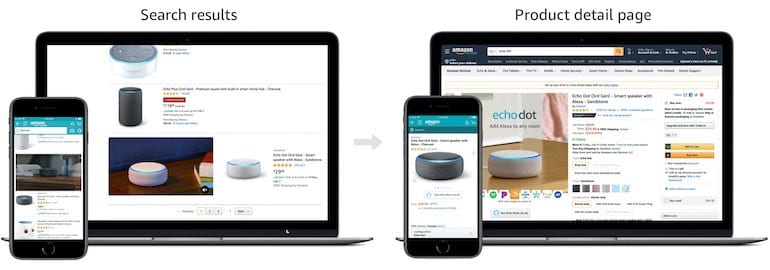This year I have had the opportunity to beta test the Amazon Sponsored Video Ads released to the public in early October. I have held off on writing about the ad type until I had the opportunity to examine the ad impact through Prime Day and Black Friday/Cyber Monday. The ad type has reported surprising performance and I am here to report on my experience and recommendations so you can find success with the creative as well.
Sponsored Brand Video Ads Breakdown
The video ads are the latest creative for the Amazon Advertising Console self-serve ad platform. The ad type allows for 6 to 45-second videos in the 16:9 aspect ratio. Sound can be included but the ad does begin muted. The ad placement appears on the Amazon SERP, however, unlike image sponsored brand ads the video placement is inline with the search results and not at the top of the page. When a user sees the ad it begins automatically playing when 50% or more of the video is on the page. Like other sponsored brand creative, users click through on the ad to the Product Store to learn more about the product and purchase.
To have a video ad resonate with a user on Amazon, the video needs to catch their eye while being brief to get your product message across quickly. The video auto-plays muted and has no option to go full screen. Use creative that is attention-grabbing so a user pauses to watch. An average Amazon customer is most often in the consideration phase by the time they are on-site and this can lead to lower interaction with higher-funnel creative. However, an interesting video with a strong message can get them to interact/purchase from your brand. Keep your video tight and on-message and you will be on your way to a successful campaign.
Sponsored Brand Video Ad Targeting
In terms of targeting, sponsored brand video ads only allow for keyword targeting at the time of this writing. The image ads have a broader category targeting option but for video, we have keywords. How you target will depend on your goals. For my client during the beta, we were a luxury electronic brand broaching into a new market. Our focus was on brand and competitor keywords. For Brand, we wanted to have video media for new users to help showcase the quality of the product line. For competitor targeting, the goal was to introduce qualified users in the consideration phase who may not have heard of our brand before.
I also recommend testing non-brand and complimentary keyword targeting. Non-brand is the classic search technique of going after keywords that broadly relate your product to introduce users to your brand. Complimentary targeting is where you go after product keywords similar to your brand, e.g. if your client had a sunscreen line it would be worth targeting keywords like beach towels to keep your product top of mind for users likely to purchase your product soon. (Complimentary targeting is also a phenomenal strategy for Sponsored Display ads, an ad type you can learn more about in “An Intro to Sponsored Display Ad Campaigns” by Urvi Dhanesha.)
Sponsored Brand Video Ad Impact
Going into using the beta, I expected the sponsored brand video ad type to be an awareness builder. I expected to report a higher than average ACoS with the ad type being like YouTube or Display where there is almost an unlimited capacity to spend. However, the performance proved nearly the opposite.
Our Amazon Sponsored Brand Video ads reported an ACoS 44% lower than our other campaign types with a conversion rate 21% higher than the account average (3.52% versus 2.89%).
Video ads brought in more qualified clicks compared to other ad types. Users who watched and clicked through were more likely to purchase. The biggest challenge of this ad type was a struggle to spend the allocated budget. We averaged around 33% of our budget. This was consistent even through the holiday peaks where we reported depleted budgets across campaigns from the other ad types. From what I can reason, the ad type was acting as a gatekeeper that stopped lower quality clicks, leading to less spend but also the lower ACoS.
Based on my experience, I highly recommend testing the video ad type in your account. With a strong, platform-optimized video I expect you will be able to find similar success for your company. If you have already given it a try or have questions as you set up, reach out on Twitter. I am interested in hearing how performance is faring for other brands and verticals.





